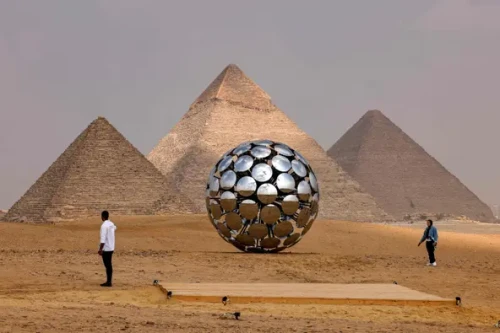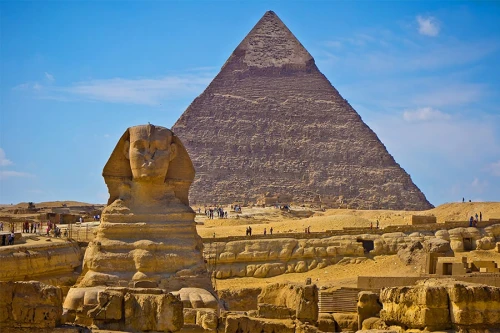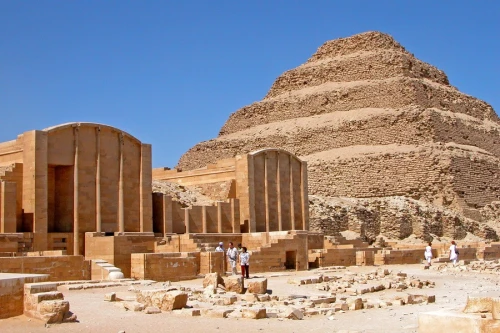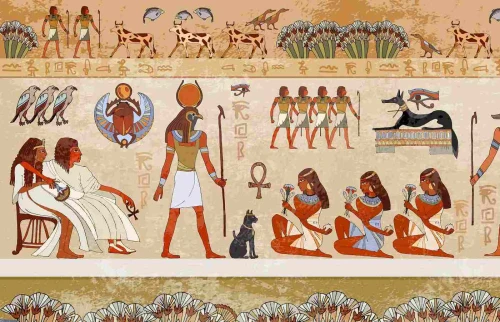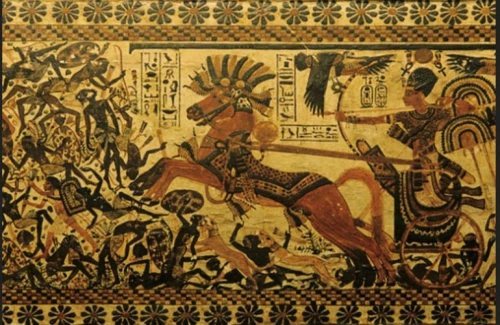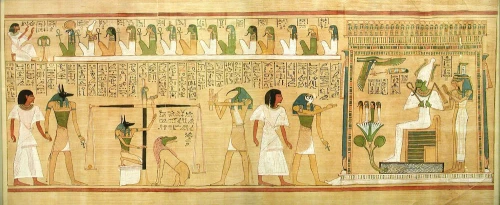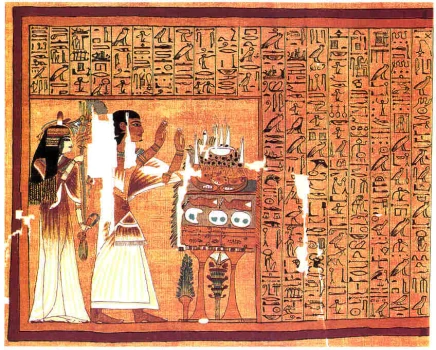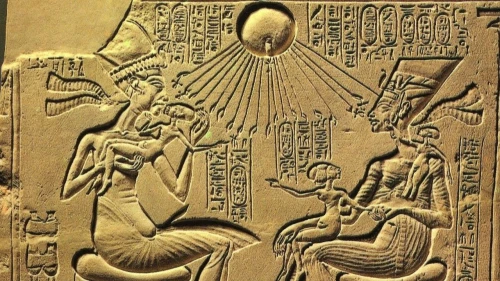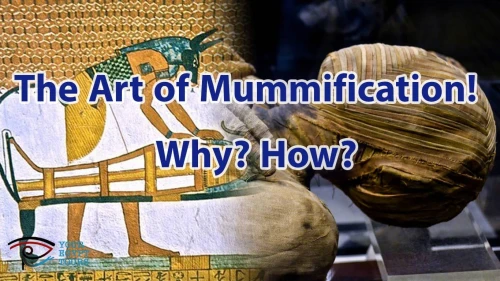
The rituals surrounding mummification are closely tied to mythology and religion. The procedure arose from the need to preserve the body so the deceased could resurrect and become one with Osiris. Osiris, the god of the dead, and Anubis, the patron of embalming, were the two most important gods associated with mummification.
Because the ancient Egyptians believed in resurrection, the physical body as well as the BA and the KA, parts of the soul, were essential for life in the next world. This was the reason for mummification so the body would be intact when it was resurrected.
In the earliest periods of Egyptian history, the deceased were simply placed in pits dug in the sand, then covered. Because the body was in contact with hot, dry sand, it dehydrated quickly, creating a natural mummy. Bacteria acting on soft tissue cause bodies to decompose, but if there is no moisture, bacteria do not attack. Because the sand quickly absorbed the moisture in the body, mummification took place naturally. Later burials were more elaborate, and bodies were placed in tombs. No longer in contact with the dehydrating hot sand, they quickly began to decay. To ensure that the body remained intact, the Egyptians developed the art of mummification.
The status of the deceased person determined what kind of mummification was performed. The most elaborate form of mummification, reserved for the king and the royal family, involved complicated surgical procedures. Because the brain is mostly water, it had to be removed with special tools. The brain was one of the few parts of the body that the embalmers discarded, as the Egyptians believed that a person thought with the heart, not the brain.
Once the brain was removed, a small incision on the left side of the abdomen was made to remove the stomach, intestines, liver, spleen, and other internal organs. The heart was left in place, however, so the deceased would be able to think when he was resurrected in the next world and say the magical spells necessary to bring his body back to life. The internal organs were placed in four canopic jars with lids carved in the shape of one of the four sons of Horus: Mesti, the human-headed son; Duamutef, the jackal; Hapi, the baboon; Qebesenef, the hawk. After the wrapped internal organs were placed inside the canopic jars with a fluid called the liquid of the children of Horus (a solution of water and Natron, the jars were sealed and the priests recited prayers to invoke the protection of the four sons. The oldest example of canopic jars was a chest with four compartments found in the tomb of Queen Hetepheres, mother of Cheops, the builder of the Great Pyramid (2580 - 2566 -B.C).
When the organs had been removed, the body was placed on an embalming table and covered with natron, a naturally occurring compound of sodium carbonate, sodium bicarbonate, and sodium chloride baking soda and table salt. Because a body is approximately 75 percent water, it took more than 400 pounds of natron and 35 days to dehydrate the body. When dehydration was complete, the abdominal and chest cavities were washed with palm wine and aromatic spices and often packed with linen soaked in resin so the body would retain its original shape. Sometimes sawdust or onions placed in small linen bags were used as packing material. The face was padded with linen in the cheeks and under the eyelids. Just before bandages were applied, the body was anointed twice from head to toe with oils mixed with frankincense and myrrh. A priest wearing a jackal mask recited prayers as the oils were poured on the body:
Thou hast received the perfume, which shall make thy members perfect. Thou receivest the source (of life) and thou takest the form of the great Disk, which uniteth itself unto thee to give enduring form to thy members; thou shalt unite with Osiris in the Great hall. The unguent cometh unto thee to fashion thy members and to gladden thy heart, and thou shalt appear in the form of Ra; it shall spread abroad the smell of thee in the nomes of Aqert. Thou receives the oil of the cedar in Amentet, and the cedar which came forth from Osiris cometh unto thee.
(E. A. Wallis Budge, Egyptian Magic)
Once the mummy had been anointed, the bandaging followed a precise ritual. In royal burials, when the fingers and toes were wrapped, individual gold covers were placed on each finger and toe for added protection. When the arms, torso, and legs were wrapped, the priests placed magical amulets in the bandages to protect the mummy until it was resurrected in the Netherworld.
 English
English
 Spain
Spain

